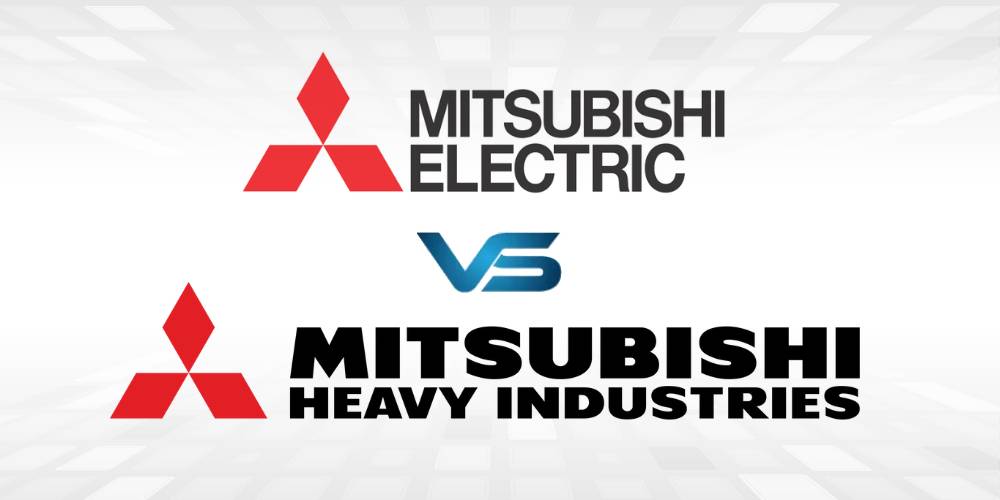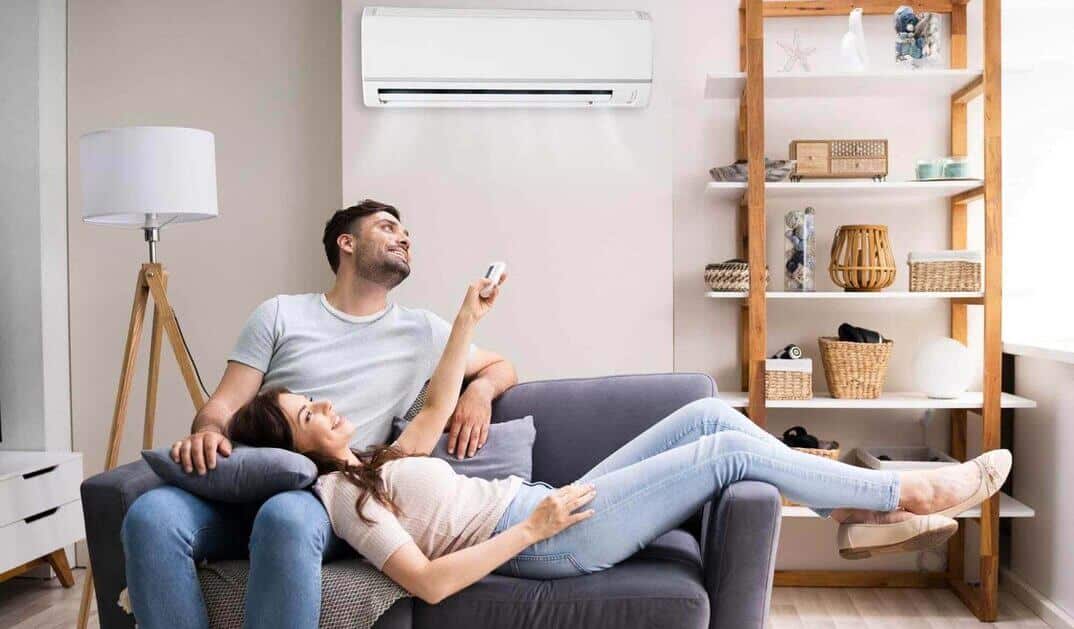
Same Name, Different Game: Which One Keeps Its Cool? 1. The Tale of Two Titans (Mitsubishi Electric vs Mitsubishi Heavy […]

According to the Australian Bureau of Statistics, over 74% of households use some form of air conditioning, and in states like Queensland and New South Wales, this number climbs even higher.
The demand for cooling solutions has surged in recent years, driven by rising temperatures and energy-efficient advancements. With record-breaking heatwaves becoming more frequent—Sydney alone recorded a sweltering 48.9°C (120°F) in 2020—the reliance on air conditioning continues to grow.
But what’s driving this trend?
Is it just the heat, or are there other factors at play?
Let’s explore the rise of air conditioning in Australia and what it means for homeowners and businesses alike.
In this article, we will examine the level of air conditioning use in Australia from the perspective of key trends, states’ spread of adoption, latest application technologies and government initiatives.
This guide covers everything you need to know, whether you are planning to replace your system, questioning the sustainability effort, or you are just intrigued by the air conditioning trends of today and the future.
The Australian climate is the fundamental reason why air conditioning has become essential for residents. Air conditioning plays a critical role in daily life because Australia has a wide range of climates, extending from mild to hot regions.
Modern buildings require cooling systems for residential, commercial, and industrial purposes to guarantee comfortable, productive, and healthy interior conditions during extreme outdoor temperatures.
Air conditioning usage is influenced by weather patterns, as well as factors related to housing design and consumer preferences.
The mounting number of Australians feeling hotter summers and climate volatility drives up their use of air conditioning systems.
A significant portion of Australian homes use air conditioning systems, particularly in hot areas across the country. Residential properties throughout Queensland and New South Wales require air conditioning units above mere luxuries due to the climate conditions.
The substantial amount of household energy consumed by air conditioning has become a primary focus for household owners as well as government authorities. Multiple energy-efficient models, as well as smart cooling technologies, are increasing in popularity.
The market share of reverse-cycle air conditioners increases because their dual heating and cooling capabilities and energy-saving performance appeal to a wide range of users. The units help households obtain climate control during all seasons while benefiting from discounted energy prices.
Residents and business owners across Australia look for contemporary air conditioners that operate sustainably while offering comfort and affordability during operation.
This section studies the implementation patterns of air conditioning machines throughout different states across Australia, along with examining both government-supported benefits and forthcoming technological advancements within the Australian air conditioning market.
The diverse climate zones and governmental policies of Australia create different adoption levels of air conditioning systems among its states.
The cooling requirements differ between areas that need intense cooling systems and those areas where heating units serve as their main system requirement.
Here is a closer look at air conditioning usage trends across different states.
The climate in NSW requires most homes to have air conditioning units because temperatures reach extreme heights during summers, while winters remain gentle.
Most residents in NSW can benefit from the NSW Climate and Energy Action Program’s rebate system, which helps them get discounts on energy-efficient air conditioning systems.
People living in residential homes now choose modern smart systems alongside energy-efficient cooling products to reduce their utility expenses and environmental benefits.
The Victorian Energy Upgrade (VEU) scheme drives residential customers to exchange outdated equipment with modern energy-efficient cooling units.
Because of its cold winter season, reverse-cycle air conditioners with heating and cooling functions enjoy significant popularity throughout Victoria.
The tropical environment compels both domestic and commercial sectors to use air conditioning systems extensively when summer humidity reaches its peak.
PeakSmart operates through a rebate system that benefits homeowners who install smart air conditioners to control peak electricity usage.
Due to their hot, dry summers, desert-dwelling residents need to buy many efficient cooling solutions.
People are aware of energy-efficient models because of high electricity expenses, so they choose advanced air conditioning systems that offer better performance.
The lower temperature environment in Tasmania motivates residents to choose fewer air conditioning systems than in other states.
Many buyers want air conditioners with heating features despite cool winters because these units provide heat as well as cooling.
The adoption of air conditioning differs by state throughout Australia, so local government regulations, together with resident choices, remain fundamental to current trends.
The air conditioning market continues to advance because of government support for new technology while it transforms into high-efficiency systems that combine effectiveness with sustainability, thus becoming fundamental to Australian residences and commercial establishments.
Various government incentives and policies support the widespread adoption of air conditioning systems.
These incentives in Australian states work to boost air conditioning system efficiency while decreasing costs and environmental pollution.
Government support programs offer both financial advantages to citizens and enterprises when they make energy-efficient equipment purchases to benefit their budgets and protect the environment.
The NSW Energy Savings Scheme gives rebates alongside discounts to residential and commercial entities that shift to more energy-efficient air conditioning equipment.
These programs focus primarily on both minimising energy consumption and easing pressure on electric network components.
Under the Victorian Energy Upgrade (VEU) Scheme, customers who are Victorian residents or businesses can obtain rebates to buy air conditioning units that perform well.
The financial support from this initiative enables the adoption of green air conditioning while delivering economic benefits.
New South Wales homeowners can benefit from rebates by obtaining financial incentives for modern energy-efficient air conditioning unit upgrades.
The program expands sustainable cooling availability for public users by encouraging effective cooling system implementations for the general public.
Household customers enjoy reduced energy usage along with reduced electricity bills after participating in these programs.
These government incentives help stimulate the adoption of power-efficient air conditioning products to help residents choose sustainable cooling options that help reach national energy-saving targets.
The incentive programs also reduce the peak electricity demands and, therefore, lower the chance of power outages when weather conditions become severe.
Future government administrations will increase their attention to air conditioning technology through higher energy efficiency standards while establishing new rebate programs.
The emphasis on sustainability in Australia will sustain the need for these incentives to create affordable, environmentally friendly air conditioning solutions.
The air conditioning sector in Australia continues to evolve through the adoption of revolutionary technologies that conserve energy and protect the environment. Sustainability turns into a key goal that drives development in air conditioning technology.
With the rise of robotics and artificial intelligence, air conditioning systems can learn to automatically adjust temperatures, such as cooling power, based on outside temperature measurements.
Smart control systems balance power use and comfort needs to reduce waste.
Platforms can now use solar energy to replace standard cooling options for air conditioning because of solar technology improvements. These renewable energy systems use solar power to decrease energy usage from the grid.
New air conditioners improve energy usage by 600% through heat transfer instead of generation. Such units help users save energy and enable the equipment to work properly at the same time.
Air conditioning in Australia needs targeted solutions to its current hurdles in order to prosper in the future.
Cooling with air conditioners uses a large amount of electricity, which creates practical issues related to energy consumption and monetary expenses.
Regular air conditioners produce refrigerants that contribute to global warming. The most recent air conditioning system designs use environmentally friendly refrigerants to decrease these negative outcomes.
Affordability & Accessibility: While government incentives make energy-efficient air conditioning more affordable, some lower-income households still struggle with upfront installation costs.
Future Trends in Air Conditioning.
The growing trends in air conditioning throughout Australia demonstrate that air conditioning systems form an essential component of household life in the nation.
The widespread use of air conditioning in the region results from multiple influences that merge government promotions with weather demands and technological innovation.
The evolution of the industry moved toward sustainable and affordable solutions as a result of these factors. The primary focus of both end-users and producers is on energy efficiency.
The NSW Energy Savings Scheme, along with Victorian Energy Upgrade, provides funding that simplifies the purchase and installation of efficient air conditioning systems. The future of modern Australian living needs air conditioning, but we can achieve this by developing energy-friendly technologies and government support initiatives.